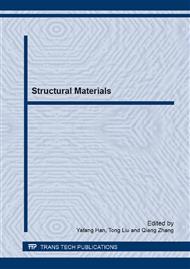p.7
p.12
p.17
p.23
p.28
p.34
p.41
p.45
p.52
Production of Primary Magnesium by the Aluminothermic Reduction of Magnesia Extracted from Dolomite Ore
Abstract:
In this paper, a new process for the production of the primary magnesium is introduced using the dolomite as the raw material. The magnesia and calcium carbonate were prepared from dolomite by acidification. The content of magnesium oxide can reach 98.92% about the magnesia obtained. The magnesia is used to produce primary magnesium by aluminothermic reduction under vacuum condition. The reduction ratio of MgO can be up to 86.14% under the temperature of 1200°C for 5hrs, briquetting pressure of 10MPa and the molar ratio of MgO to Al of 3:2. The content of magnesium is more than 99.90%. The major phases in the briquette residue are corundum and spinel, which can be used as refractory.
Info:
Periodical:
Pages:
28-33
Citation:
Online since:
April 2014
Authors:
Keywords:
Price:
Сopyright:
© 2014 Trans Tech Publications Ltd. All Rights Reserved
Share:
Citation:


